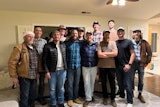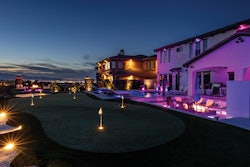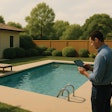
Way back in 1985 when my career as a writer was just starting, I landed a plum of an assignment covering the design and construction of the Orange County Performing Arts Center for a magazine (now long defunct) called Music & Sound Output, a trade publication for the professional audio industry.
At the time, the facility (called OCPAC for short, located in Costa Mesa, Calif.) was considered a state-of-the-art performing arts venue. It had a radical, asymmetrical, ultra-contemporary architectural design, an advanced acoustic design based on computer modeling — a revolutionary technology at the time — and top-shelf sound, lighting and theatrical staging systems.
It was a thrill for a kid fresh out of college to cover the creation of such a place. When I received the assignment, OCPAC was only a few months away from its grand opening and in effect I had an all-access backstage pass to the amazing creative and technical processes required to build a premiere venue for the performing arts.
Behind The Scenes
It was an incredible way to cut my teeth researching and writing about design, engineering and construction topics. During the four months I worked on the story I interviewed numerous people involved, each of whom had a story to tell about their role in the process. Truth told, I probably learned more about covering the real world on that assignment than in all my years studying language arts in school. At least it felt that way.
Through it all, one theme consistently rose above the rest – the power of collaboration. I learned in vivid examples the teamwork required among the architects, general contractor, subcontractors, mechanical engineers, structural engineers, electrical engineers, acoustic consultants, rigging specialists, manufacturers, facility managers, program producers, architectural lighting designers and stage-craft professionals among many others, was all encompassing – almost mind-bending in scope.
By the time I turned in my 4,000-word article, my entire outlook and appreciation for the utter necessity of professional cooperation had gone from almost non-existent to a near obsession, a near obsession that continues to this day. And as if to put a defining coda on that entire life lesson, one of my perks for doing the story was a VIP invitation to a performance by the Los Angeles Philharmonic Orchestra.
Although a major music fan, I had never attended a classical music performance before and was pretty overwhelmed at the intricacy and majesty of the sonic experience. It also wasn't lost on me that a symphony orchestra is based on the exact same kind of collaborative concept as was the creation of the venue itself, a prime example of virtuosos working together to create something amazing.
The Big Idea
I recount this formative professional experience to make a point. If we want to do great things, we all must at some point work together with other people toward a shared goal.
That might seem an obvious observation, but for those of us intimately familiar with the pool and spa industry, it's equally apparent that this is a business filled with a breed of fierce individualists who, frankly, often blanch at the idea of conforming to the way other people see and do things.
In fact, I'll go so far as to say that the No. 1 thing that keeps the pool and spa industry in the U.S. pinned down, hemmed in, up on blocks and tied to the stake is its chronic lack of affiliation and cooperation with other professions.
I just don't understand it! Why this industry is not tied at the hip to the professions of architecture, landscape architecture, health and fitness and hospitality industries is a tragic mystery to me. As just one example, here we have an industry that generates a product that provides the healthiest form of exercise known to humankind, and yet if it weren't for the efforts of the National Swimming Pool Foundation (a shining exception in all of this) our entire industry would have virtually no interface with the medical community.
No one has ever come close to adequately explaining that and the myriad other similar disconnects that define our position in the rest of the design and construction universe. Frankly, I get steamed just thinking about it.
But, rather than simply complain, I'm using this space in AQUA Architecture to mount a campaign of sorts, to show through our coverage examples of the amazing achievements and advantages available through professional collaboration and affiliation.
The features that follow in this edition all touch on the theme in different ways, and I'll leave it to the authors to tell their own stories and make the case by example. And although future issues won't be so overtly structured around the idea of collaboration, you can bet that much of the coverage will pick up this all-important thematic thread over and over again across a range of topics, anecdotes and scenarios.
My personal passion for this concept is primarily based on two things: First, I love what this industry does in the way it delivers beauty, excitement, tranquility, health, togetherness and above all, fun! I also have seen throughout my career covering this and numerous other industries and professional pursuits that time and time again those who reach the highest and achieve the most do so in concert with others.
Yes, the American culture celebrates the sovereignty and potential of the individual, and that's a beautiful feature of our great society, but when you run down the litany of humankind's finest achievements, they are almost without exception the product of great minds and spirits working in harmony.
Comments or thoughts on this article? Please e-mail [email protected].












































